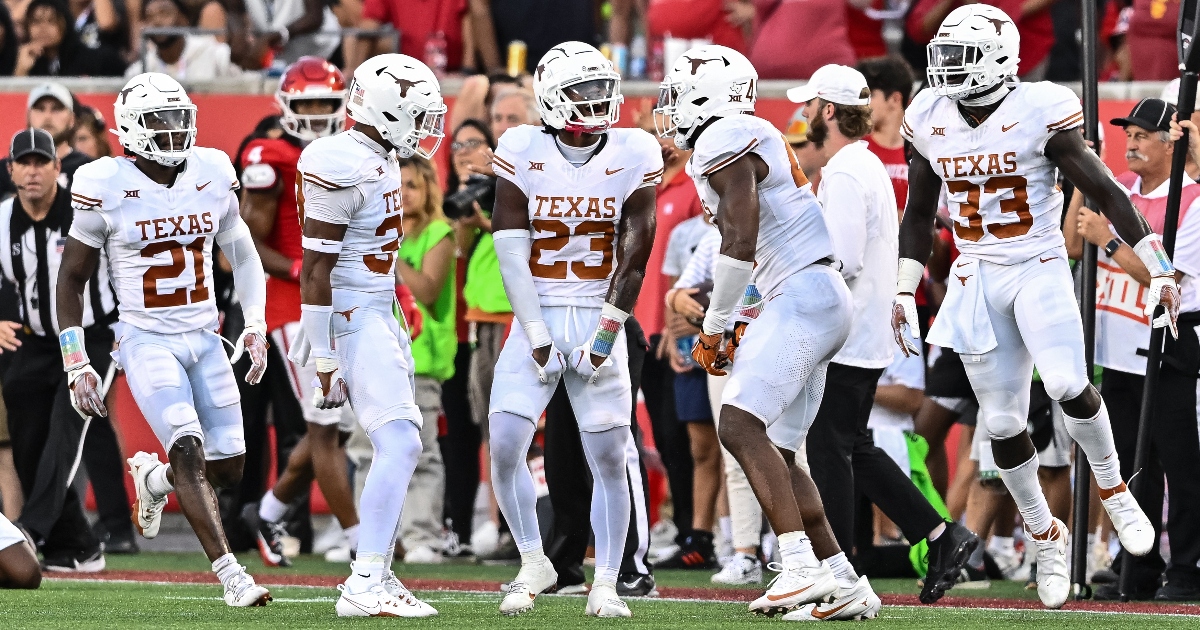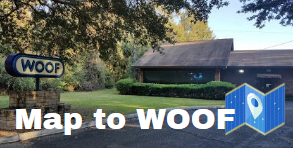Plays to know in 2024: The extreme zone blitz

Longtime observers of Texas football may remember how in the 2010s Texas hired a few coaches who were famous practitioners of the “fire zone blitz.” First Manny Diaz, who took over the Longhorn defense in 2011, then Charlie Strong and Vance Bedford from 2014-2016. Todd Orlando and even Chris Ash were also familiar with the fire zone blitz and made it a component to their playbooks.
Nowadays, no one really runs the fire zone blitz in college football.
The structure of it is to rush five, play three defenders in underneath zone, and three defenders in deep zone. Diaz taught it with simple “spot dropping” rules, where the underneath defenders would drop back to a depth based on the quarterback’s drop and read his eyes for cues on where to show up.
RPOs and spread offensive tactics shredded the fire zone. It was impossible for defenses to honor their run responsibilities, play with spot dropping rules and eyes on the quarterback, and take away all the quick throws and routes available to the quarterback. As we’ve discussed this offseason, Texas is one of many teams that now play straightforward man coverage when they rush the quarterback with five.
There is still one other kind of zone blitz with simple spot dropping that Texas used at times in 2023 and is still popular around football. This is blitz that many top teams are using and the Longhorns may or may not continue to develop but will likely face from opponents in the SEC. It’s very aggressive and a nasty weapon on 3rd-and-long.
The Narduzzi zone blitz
The blitz I’m talking about started to come into vogue in the early 2010s with the Michigan State Spartans under defensive coordinator Pat Narduzzi, now the head coach at Pitt. The structure is to drop three defenders deep like the fire zone (or Cover 3), drop just two defenders underneath in “hot” zones reading the quarterback’s eyes and matching the first developing hot route, and to blitz SIX defenders at the quarterback.
The Spartans had a particular version of this blitz called the double A-gap blitz where they’d fire the two inside linebackers into either A-gap and either immediately sack the quarterback or flush him out of the pocket on a play where two other pass-rushers were attacking the outside gaps to either side.
As you can see from this example, rival Michigan became well aware of the blitz. In this game the Wolverines “rushed” for -48 yards and produced just 168 yards of total offense while quarterback Devin Gardner was sacked seven times.
At least once a game every year since (that I’ve watched) the Spartans have run this blitz, perhaps to see if they can trigger PTSD in Michigan.
The two underneath zone defenders are key to making it work against a shotgun team where the quarterback doesn’t turn his back on the defense. They have to deny the quick hot routes over the middle a quarterback can throw to punish the blitz or else you can get into real trouble. If they’re successful, it’s tough to beat. The center has to pick up one of the linebackers and your running back or a guard has to pick up the other one or the quarterback will have a free-hitter in his face immediately after the snap. Beyond that, the protection is doomed to eventually break down before long with six guys in the pressure and it’s on the quarterback to identify the coverage as the hot zone rather than a zero blitz (no safeties back) and get the dang ball out.
Relevance to Texas
This blitz has some particular relevance for Texas in the Red River Shootout.
To begin with, the Sooners carry it. Brent Venables has had it in his arsenal for a while, at least dating back to Clemson if not earlier. However it’s not something they use a ton against the Longhorns. Steve Sarkisian’s RPO package and plays like Ezekiel’s Wheel are death for the 3-deep/2-under zone blitz, which cannot match the wheel route and quick hitting underneath throws with only two underneath zone defenders.
Where it could be more relevant is in attacking offenses like Oklahoma’s. Texas ran their own version of this blitz a few times last season against another Veer and Shoot team on the schedule, the TCU Horned Frogs.
The timing on these is not great. Ideally the linebackers have a better sense of the snap count and are in motion just before the snap and not beginning their path from a stand still. The backers also don’t even get any cross action on the second example like they do on the first. Crossing their paths makes it that much harder for the center and protection scheme to pick them up and avoid one of them running right into the quarterback.
Texas was unable to perfectly match the hot routes on either of these examples, although they did a pretty good job particularly considering how outnumbered the two underneath defenders are in the spread sets. Both times they were able to force a quick decision and short throw from the quarterback on 3rd-and-long, leading to a chance to make a tackle well short of the sticks.
It’s not possible to cover everything underneath from this blitz, that’s not the point. The design is to overwhelm the protection, take away hot routes, and otherwise be in position to stop a touchdown if the quarterback can get the ball out to the right spot.
Pete Kwiatkowski is a fan of bringing big blitzes on 3rd down as they don’t give the offense any time to set up any route combinations to spring someone open down the field. Instead they short-circuit the play and force the quarterback to make a good and pressured decision.
This style of blitz wants great blitzing linebackers, which Texas should have with David Gbenda and Anthony Hill, and smart hot zone defenders like Andrew Mukuba, Jahdae Barron, and Michael Taaffe. If they wanted to invest into this blitz for 2024, they could be very good at it.
Everything having to do with how Texas pressures opposing quarterbacks is going to matter a lot in 2024. They have a secondary stocked with good coverage defenders, multiple weapons in the pass-rush, and a slate of opponents with some sketchy offensive lines. If they master multiple means of pressuring teams, they should be able to overwhelm some opponents next season. Especially spread teams coming to Dallas with rebuilt offensive lines protecting inexperienced young quarterbacks.
The post Plays to know in 2024: The extreme zone blitz appeared first on On3.
